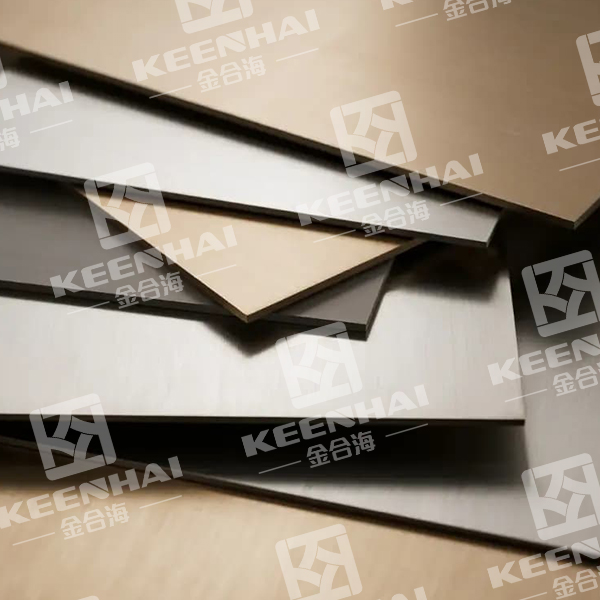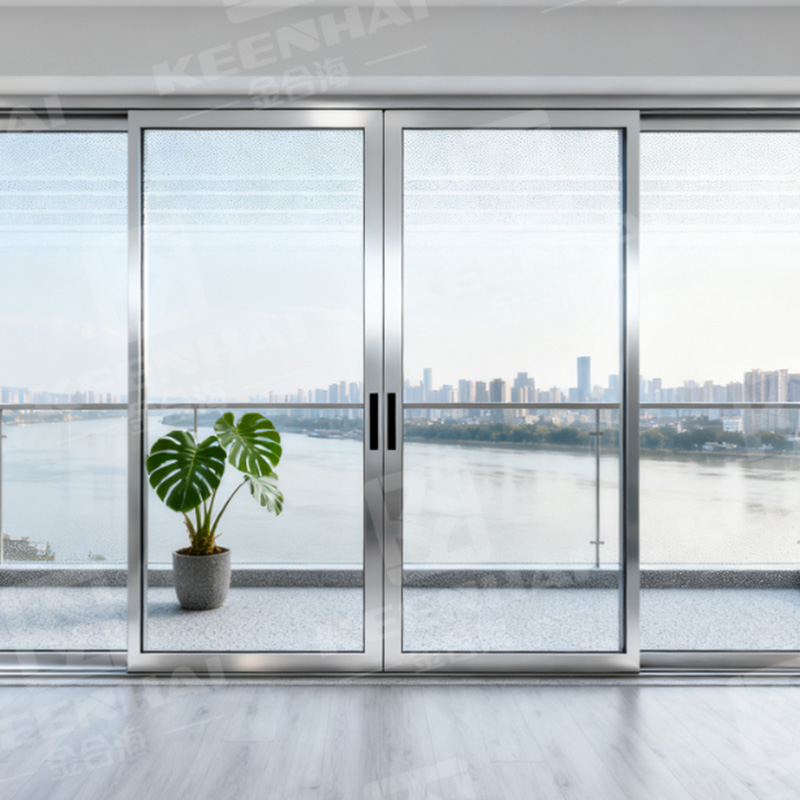Most modern elevator doors are made from stainless steel because the material balances strength, safety, and looks. In high-traffic places like airports, malls, and hospitals, doors face constant use, scratches, and cleaning. Stainless steel holds up without warping or losing its finish. It also supports different designs, from a brushed industrial style to polished or colored options for luxury interiors. That’s why developers and architects often rely on stainless steel when they want something reliable that still looks premium.
1. Common Materials Used for Elevator Doors
1.1 Stainless steel as the industry standard
Architects and facility managers pick stainless steel for elevator doors more often than anything else because it balances strength, hygiene, and looks. In busy hubs like airports or office towers, teams need a surface that stands up to constant contact, bag bumps, and repeated cleaning; stainless steel answers that demand while still giving designers plenty of finish options — brushed, mirror, or colored PVD-like coatings. For example, a downtown financial tower chose elevatordøre i rustfrit stål for all its lobbies to keep a consistent, low-maintenance aesthetic across floors; after five years of daily traffic the surfaces still look sharp because the material resists dents and cleans up quickly. Also, if you want technical background on the base metal, see Rustfrit stål on Wikipedia for composition and corrosion-resistance basics.
Put simply: stainless steel keeps looking good under pressure, and that’s why people specify it first.
1.2 Alternative materials (aluminum, glass, wood veneer)
Designers pick other materials when they need a specific look, lower weight, or a softer feel. Aluminum goes into lighter-weight residential lifts because installers move panels faster and pay less for handling; however, aluminum dents easier than stainless and shows wear sooner in public settings. Glass gives a modern, open feel and fits well in glass atriums or boutique hotels, but owners clean it far more often because fingerprints and smudges show up instantly. Wood veneer creates warmth in private homes and high-end hospitality projects, yet managers must monitor humidity and refinishing needs closely—wood demands more care than metal.
For instance, a seaside condominium tried wood-veneer doors to match its warm interior palette; within 18 months management started a partial refacing program after repeated moisture-related lifting at the panel seams. That project shows the trade-off clearly: you gain style, but you accept higher upkeep.
| Materiale | Holdbarhed | Opretholdelse | Best Use Cases | Quick Trade-off |
|---|---|---|---|---|
| Rustfrit stål | Høj | Lav | Airports, malls, office lobbies | Durable, low upkeep |
| Aluminum | Medium | Lav | Mid-rise residential, budget builds | Lighter but dents easier |
| Glass | Medium | Høj | Luxury apartments, storefront elevators | Clean looks, high cleaning needs |
| Wood Veneer | Low–Medium | Høj | Private homes, boutique hotels | Warmth vs. moisture risk |
1.3 Why stainless steel is most widely chosen
Stainless steel dominates elevator door design because it blends toughness with everyday practicality. The panels hold up against bumps from luggage, shopping carts, or cleaning equipment, and they don’t chip or peel when people lean against them day after day. Building owners rely on this strength to cut down on replacement costs and keep entrances looking sharp even in high-traffic zones.
Cleaning teams also appreciate how simple the surface is to maintain. A soft cloth with a mild solution removes fingerprints and smudges in minutes, leaving the doors with a professional finish. Compared with wood veneers that need refinishing or glass panels that demand constant wiping, stainless steel feels effortless. That’s one reason malls, hospitals, and subway stations all lean on this material — it keeps the operation smooth without adding workload.
Design flexibility seals the deal for architects. A developer can specify brushed finishes for a corporate lobby, mirrored doors for a luxury hotel, or colored coatings that match brand themes. For example, a high-end residential tower in Singapore outfitted all of its elevator banks with bronze-tinted stainless steel, giving the interior a warm glow that echoed the lobby’s lighting. Residents praised the look, and management noted how the material stayed pristine even after two years of continuous use.
When durability, low maintenance, and creative freedom come together in one material, stainless steel naturally rises as the go-to choice for elevator doors.
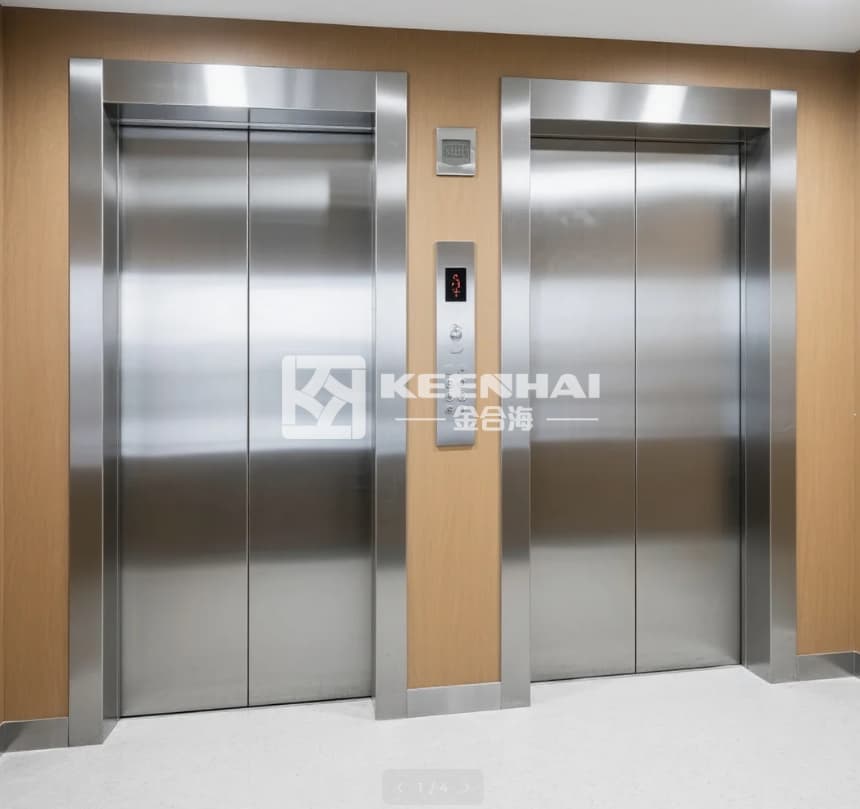
2. Benefits of Stainless Steel in Elevator Design
2.1 Durability and resistance to wear
Stainless steel outperforms other materials in high-traffic environments because it resists dents, scratches, and repeated contact. In busy office towers, people push carts, drag suitcases, and brush against the panels daily. Doors made of softer materials like wood veneer often show scuff marks within months, while elevatordøre i rustfrit stål keep a clean, professional look for years.
In a downtown shopping mall, managers noticed that their stainless-clad cabs lasted nearly twice as long as the aluminum-framed ones in a nearby wing. The key difference lay in the steel’s harder surface, which absorbed impact without leaving visible damage. This kind of durability lowers replacement costs and makes the material a safe investment for owners planning long-term operations.
2.2 Corrosion resistance and hygiene benefits
Moisture and cleaning chemicals often threaten the surface of elevator entrances. Stainless steel resists corrosion, making it an obvious choice in humid climates and coastal cities where salt air quickly deteriorates painted metals. Cleaning crews simply use a mild solution to remove fingerprints, and the surface maintains its polished finish without pitting or rust streaks.
Hygiene also plays a central role in modern building standards. Stainless steel surfaces, unlike porous wood panels, do not trap bacteria or mold. Hospitals and airports lean on this advantage because the non-porous surface supports frequent sanitizing routines without wearing down. For example, a medical center in Tokyo upgraded to stainless finishes in all patient-access lifts. The staff reported faster cleaning and noticeably fewer surface stains even after constant disinfection.
2.3 Aesthetic versatility and finishes
Design flexibility makes stainless steel stand out as more than just a practical option. Architects can specify brushed, mirrored, or colored coatings that tie into the overall interior scheme. A luxury hotel in Dubai installed stainless steel elevator entrance panels with a gold-toned PVD finish that reflected the chandelier lighting in the lobby, creating a striking first impression for guests.
Developers also mix finishes to separate public and residential areas. In a residential tower, management chose darker matte stainless steel for the basement parking level and warm bronze tones for residential elevator doors, giving residents a more premium feel as they returned home. The same durability remained, but the finishes offered designers the freedom to adjust atmosphere without sacrificing performance.
| Materiale | Durability in High Traffic | Korrosionsbestandighed | Design Options | Maintenance Level |
|---|---|---|---|---|
| Rustfrit stål | Fremragende | Fremragende | Wide range | Lav |
| Aluminum | Fair | Moderate | Begrænset | Medium |
| Glass | Poor (scratch prone) | High but fragile | Stylish only | Høj |
| Wood Veneer | Lav | Poor | Warm look | Høj |
The balance of strength, hygiene, and design freedom explains why stainless steel dominates in both commercial and residential elevator projects.
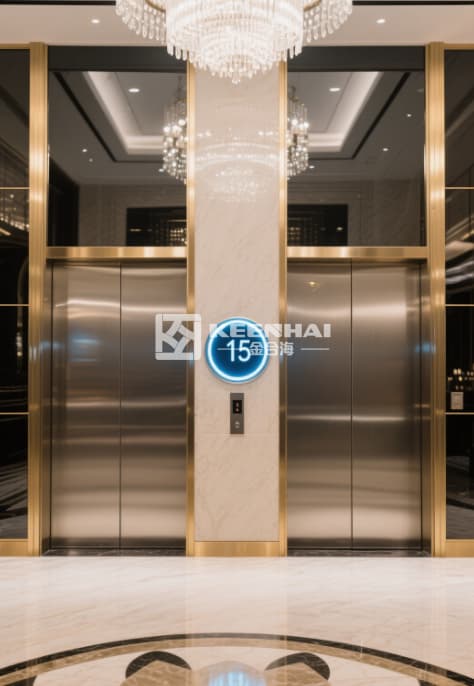
3. Variations of Stainless Steel Elevator Doors
3.1 Brushed vs. polished finishes
Brushed and polished finishes change how a door behaves in real life, not just how it looks. Brushed surfaces hide small scratches and fingerprints because the grain scatters light, so property teams prefer them in high-traffic lobbies and transit hubs where scuffs happen every day. Polished (mirror-like) surfaces deliver strong visual impact and reflect light, which makes a compact lobby feel larger and brighter, but staff must clean them more often because smudges and micro-scratches show up quickly.
In practice, designers pick finishes based on use and maintenance capacity. For example, a busy urban hospital chose vertical-brushed panels for all patient lifts so cleaning crews could remove marks fast and the grain direction hid streaks from repeated wiping. By contrast, a boutique hotel installed “ bold mirror finishes ” in its VIP elevator to create drama under chandelier light, then added a stricter daily wipe routine to protect the look.
| Feature | Brushed Finish | Polished (Mirror) Finish |
|---|---|---|
| Visual effect | Subtle, textured, soft sheen | Bright, reflective, high gloss |
| Visibility of fingerprints | Low — grain camouflages smudges | High — fingerprints stand out |
| Scratch tolerance | Higher — small scratches blend in | Lower — scratches show on reflective surface |
| Typical maintenance | Wipe weekly; spot buffing as needed | Wipe daily in high-traffic areas |
| Best use cases | Hospitals, transit, corporate lobbies | Luxury hotels, boutique retail, VIP zones |
When teams specify the grain, ask the fabricator for the grain direction and grit number so adjacent panels match visually; mismatched grain reads as poor workmanship even if both pieces use the same material. Always test a full-size sample under the actual lighting you plan to use because brushed and polished surfaces react differently to warm or cool light sources.
3.2 Colored and PVD-coated options
PVD finishes give you color without paint, and they last far longer than surface coatings. Architects choose PVD when they want metallic colors—rose gold, bronze, black—that keep their tone under cleaning and daily contact. The process bonds material onto the stainless substrate at a microscopic level, so the color sits in the surface rather than on top of it. For product details, explore our PVD stainless steel collection (link to product page).
When a design team considers PVD, follow practical steps to reduce surprises on delivery:
-
Request physical samples in the exact finish and substrate (for example, 304 vs 316 grade) and install them under the project lighting to check color shift.
-
Confirm adhesion and hardness specs with the supplier so installers understand scratch resistance expectations.
-
Specify cleaning protocol in the maintenance manual — some PVD tones show water spots under certain cleaners, so test recommended detergents first.
A landmark office tower selected dark PVD bronze for its elevator banks to match lobby brass accents. The contractor ran adhesion tests and required mock-ups before full production; during the first year the finishes held up to daily traffic and routine cleaning with neutral detergents. That field confirmation gave the owner confidence and avoided costly rework.
3.3 Integration with interior design themes
Match the door finish to lighting, hardware, and sightlines so the elevator reads as part of the space rather than an afterthought. Designers usually map three zones before they pick a finish: entry sequence (arrival), wait area (front of house), and service/back-of-house. Each zone demands a different balance of durability and style. For instance, choose more forgiving finishes where trolleys or luggage move often, and reserve high-gloss or specialty PVD tones for guest-facing banks where appearance matters most.
Follow these practical steps when you coordinate finishes across the project:
-
Survey traffic patterns on drawings and in site visits to identify high-contact doors that need tougher finishes.
-
Create a finish palette with 2–3 options (for example: matte brushed for service, satin brushed for public floors, and a PVD accent for VIP areas) so maintenance stays predictable.
-
Mock the materials in-situ—install temporary panels, check them at different times of day, and adjust if daylight or artificial light changes the perceived color.
-
Detail transitions at reveals and trims so the finish meets edge hardware cleanly; a well-detailed reveal prevents dirt build-up and preserves the visual line.
A mixed-use development split finishes by function: the retail podium used mirrored accents to reflect storefront lighting and draw passersby, while apartment lobbies used warm bronze PVD for a residential feel. The developer scheduled 1) a finish mock-up review, 2) a two-week site observation of the mock-up under both day and night lighting, and 3) a final sign-off by the interior designer before production. That three-step approach prevented mismatched tones and ensured the doors read correctly with the rest of the space.
Good finish choices come from project-first thinking: test early, pick finishes for use as well as looks, and coordinate with maintenance teams so the visual result lasts.
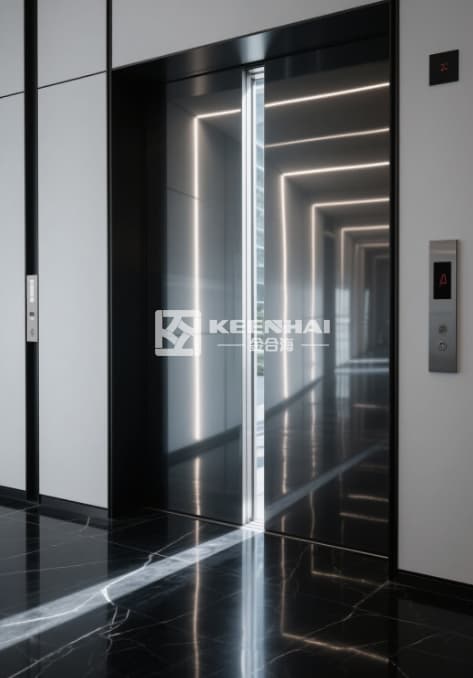
4. Factors Influencing Material Choice
4.1 Building type and traffic levels
The type of building and the number of users each day decide how tough the door material needs to be. In a busy metro station or airport, Elevator Doors take thousands of pushes and impacts daily. Stainless steel stands out because it resists dents, scratches, and stains while keeping a clean look even under heavy use. In contrast, boutique hotels or luxury apartments often focus more on aesthetics, which allows them to explore polished or PVD-colored finishes without worrying about extreme wear.
A real-world example comes from a shopping mall in Singapore where traffic exceeded 30,000 visitors per day. The developer installed brushed stainless steel doors, and after five years they still showed minimal wear. By comparison, a nearby office tower that used laminated wood veneer required panel replacements within two years due to chips and peeling caused by constant trolley traffic.
4.2 Maintenance considerations
Easy cleaning and repair drive material choice just as much as durability. Stainless steel elevator doors are favored because maintenance crews only need a soft cloth and neutral cleaner to restore shine. The surface also tolerates regular sanitization, which became critical for hospitals and public spaces during health-sensitive periods. For premium spaces, building managers select Stainless Steel Elevator Doors with a brushed finish, because the grain hides streaks from daily wiping.
In a hospital project in Dubai, facility teams adopted a three-step weekly routine:
-
Wipe with damp microfiber cloth and mild cleaner.
-
Buff dry to prevent water spots.
-
Inspect for surface scratches and apply manufacturer-approved polish if needed.
This predictable routine kept the doors spotless while reducing long-term costs, proving that the right material paired with clear care instructions saves both labor and budget.
4.3 Cost and long-term value
Upfront price matters, but lifetime performance often changes the calculation. Aluminum or laminated doors look affordable on paper, but owners frequently spend more over a decade on repairs, replacements, and refinishing. Stainless steel, especially with modern PVD finishes from pvd rustfrit stål, carries a higher initial cost yet delivers consistent value because it lasts decades with minimal intervention.
Take the case of a residential tower in New York. The developer first considered painted aluminum to reduce cost per unit, but after modeling maintenance over 15 years, they chose Stainless Steel Residential Elevator Doors. The aluminum option required repainting every five years, while stainless steel demanded only routine cleaning. Tenants also appreciated the premium look, which increased property value and lease appeal.
When long-term ownership is the goal, stainless steel offers the strongest balance of durability, upkeep, and aesthetics. That’s why it remains the material of choice in both high-traffic commercial projects and luxury residential settings.
Ready to choose the right finish? See our complete guide:What is a PVD stainless steel sheet?

